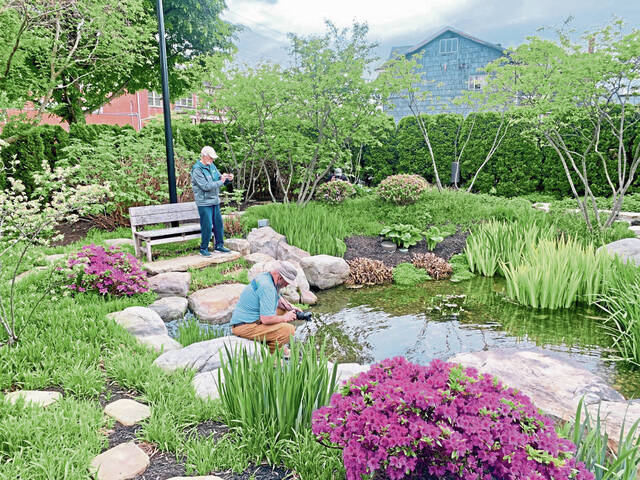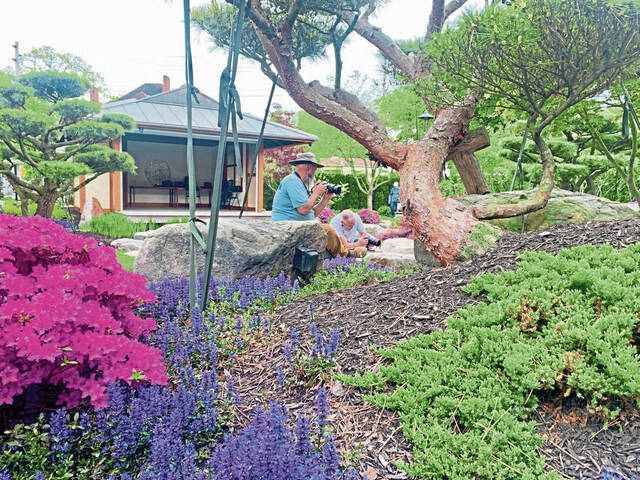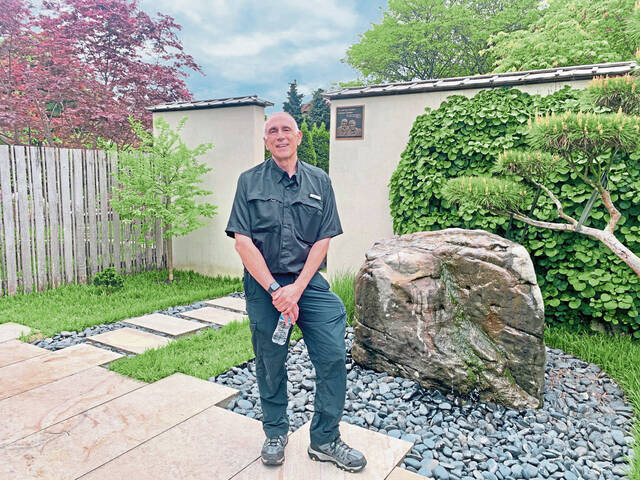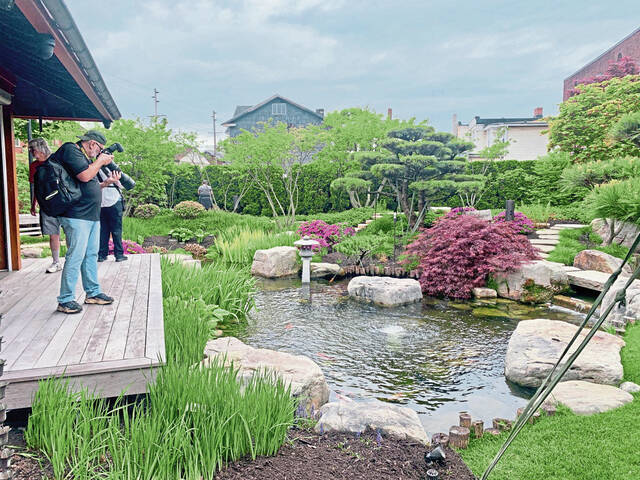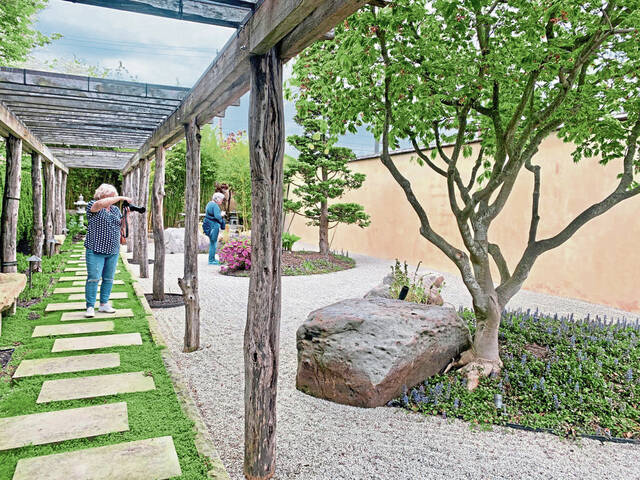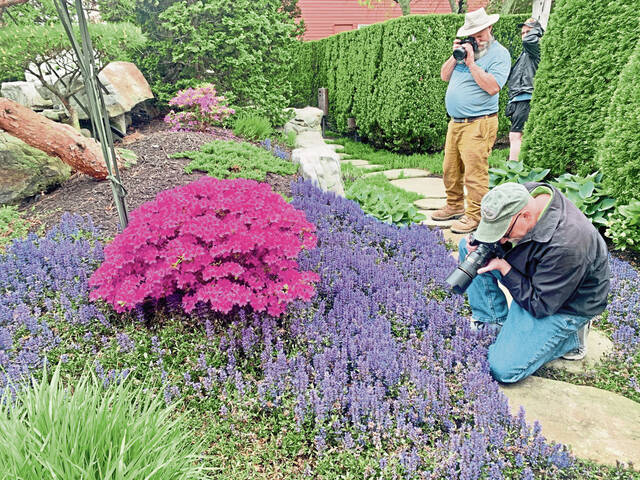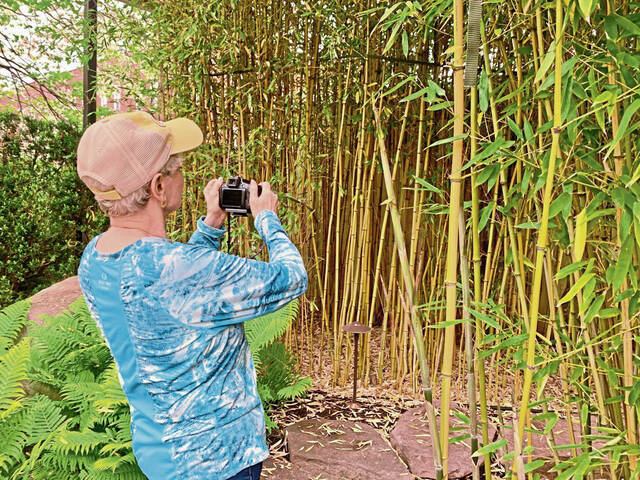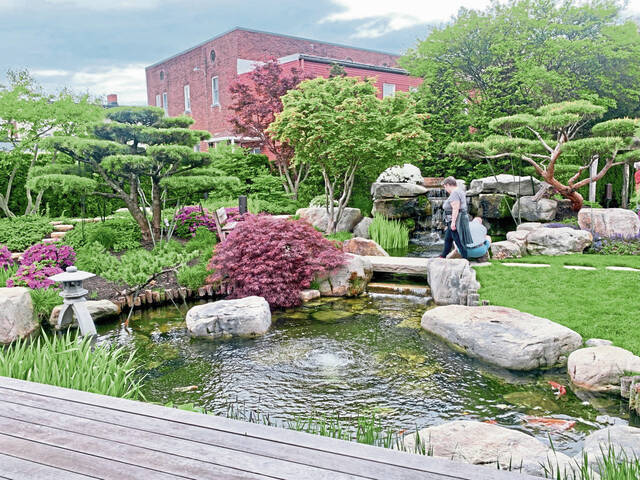Rabkin Gardens is Tarentum's hidden gem
When Michael Rabkin purchased the 1890s 2nd Ward Public School Building in Tarentum to house his medical practice, the view was less than inspiring.
“There was a hideous termite-infested shack that my office overlooked,” said Rabkin, a Brooklyn native and retired skin pathologist.
“I figured I could spend the rest of my life looking at that, or I could buy the property and have the building and the termites carted off. Then I could build a garden.”
Demolition was quick, but the project to construct a Japanese flower garden stretched over seven years, starting in 2008. The garden was dedicated to Rabkin’s parents, Hy and Irma, by their children and grandchildren on June 6, 2015.
The efforts were worth it to Rabkin and his wife, Beth, who moved to Tarentum and spend several days a week enjoying the space filled with waterfalls, koi ponds, stone benches and bright pink rhododendrons.
“It’s reminiscent of the Brooklyn Botanical Garden that I visited as a child and I loved,” Rabkin said. “For me, it is a healing space and very spiritual.”
Nestled just beyond the Tarentum business district, the sanctuary is camouflaged by tall trees and fences. Every nook has become an individual setting, with 20-foot bamboo, a wisteria arbor and expertly pruned pines and Japanese maples.
The garden is not open to the general public, but there are several times each month when clubs visit and people host events that allow people a peek.
“I think it’s one of the borough’s most well-kept secrets,” said Joel Varga, president of the New Kensington Camera Club.
His group hosted a tour Tuesday, with about three dozen photo enthusiasts oohing and aahing at the scenic grounds.
“Every spot is special,” Varga said. “I’ve been there four or five times, and it’s always different. Based on how things grow, it will always be unique.
“I especially like the waterfall. You could just sit there and fall asleep. It’s the perfect place to unwind.”
For Rabkin, it was significant to create an authentic space in what initially was nothing more than a field of mud.
He hired a contractor from Kyoto, Japan, and found himself becoming “fanatical” over the details.
“We would argue over the precise placement of every rock,” Rabkin said. “Nothing here is accidental. Every blade of grass, every bench was placed on purpose.”
Springdale resident Carole Brennan, visiting for the second time, called the site a gem.
“I like the way it’s set up,” she said. “Every little space has its own personality.”
Tawnya Panizzi is a TribLive reporter. She joined the Trib in 1997. She can be reached at tpanizzi@triblive.com.
Remove the ads from your TribLIVE reading experience but still support the journalists who create the content with TribLIVE Ad-Free.

